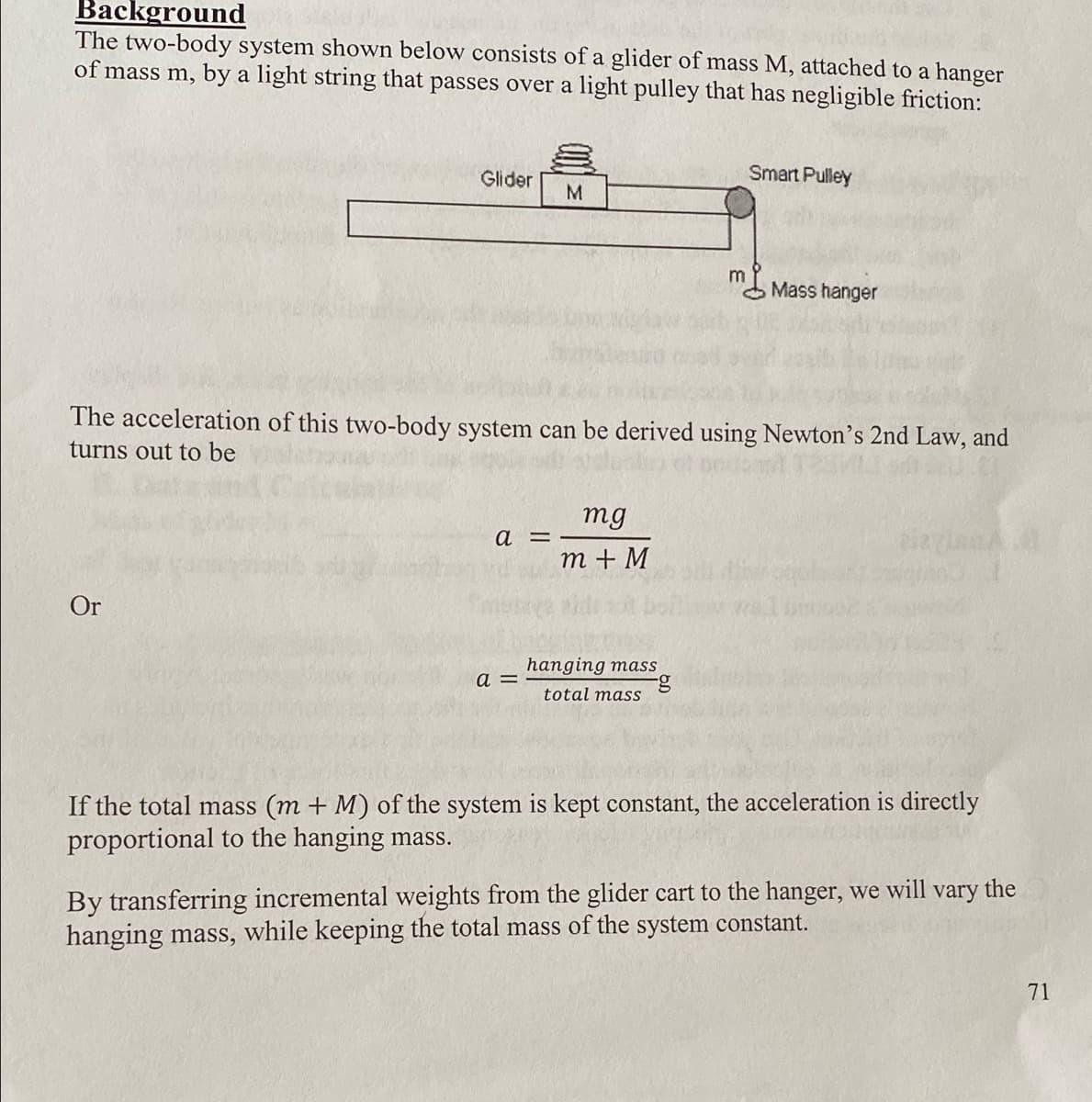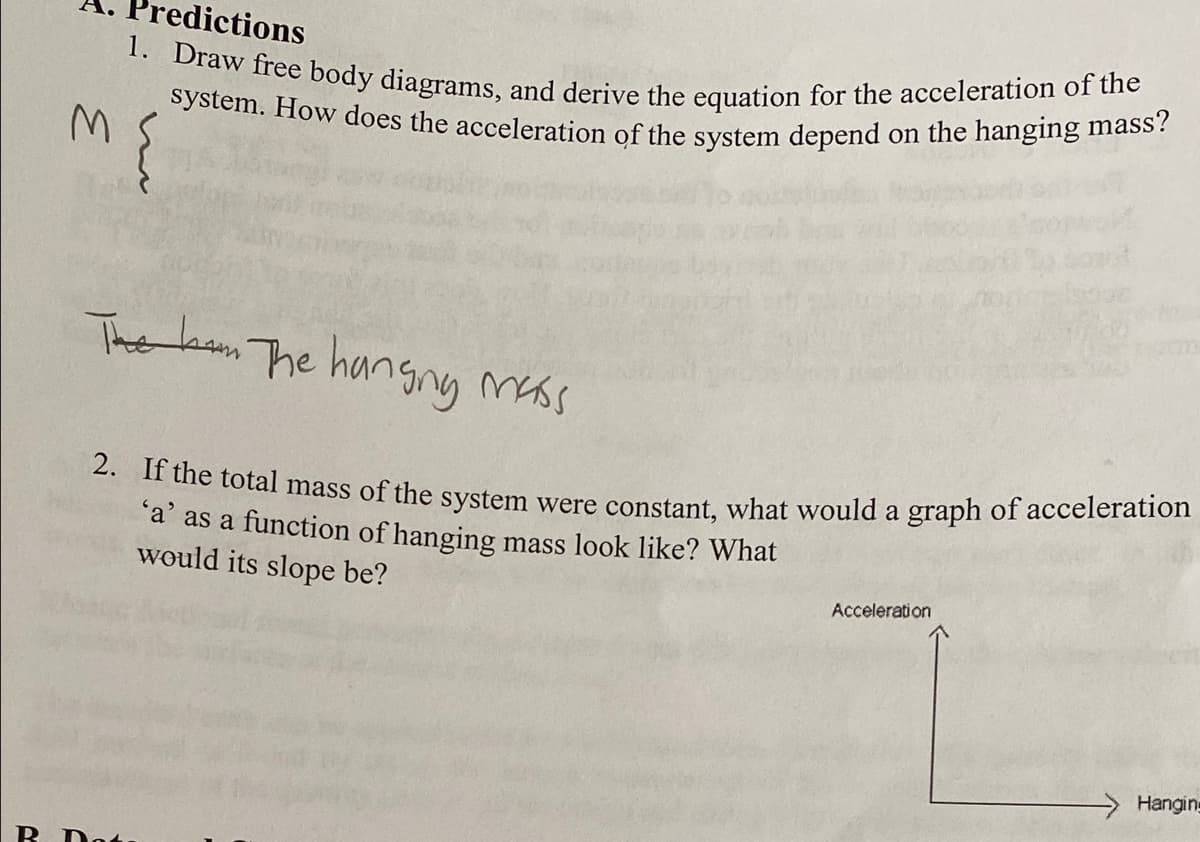die total mass of the system were constant, what would a graph of acceleration 'a' as a function of hanging mass look like? What would its slope be? Acceleration Hangin
die total mass of the system were constant, what would a graph of acceleration 'a' as a function of hanging mass look like? What would its slope be? Acceleration Hangin
University Physics Volume 1
18th Edition
ISBN:9781938168277
Author:William Moebs, Samuel J. Ling, Jeff Sanny
Publisher:William Moebs, Samuel J. Ling, Jeff Sanny
Chapter5: Newton's Law Of Motion
Section: Chapter Questions
Problem 103CP: A 0.0502-kg pair of fuzzy dice is attached to the rearview mirror of a car by a short string. The...
Related questions
Question
Number 2 If the total mass of the system were constant, what would a graph of acceleration a function of hanging mass look like ? What would it’s slope be ?

Transcribed Image Text:Background
The two-body system shown below consists of a glider of mass M, attached to a hanger
of mass m, by a light string that passes over a light pulley that has negligible friction:
Glider
Smart Pulley
mI Mass hanger
The acceleration of this two-body system can be derived using Newton's 2nd Law, and
turns out to be
mg
a =
m + M
Or
hanging mass
a =
total mass
If the total mass (m + M) of the system is kept constant, the acceleration is directly
proportional to the hanging mass.
By transferring incremental weights from the glider cart to the hanger, we will vary the
hanging mass, while keeping the total mass of the system constant.
71

Transcribed Image Text:system. How does the acceleration of the system depend on the hanging mass?
redictions
1. Draw free body diagrams, and derive the equation for the acceleration of the
The bam The hangng mass
2. If the total mass of the system were constant, what would a graph of acceleration
'a' as a function of hanging mass look like? What
would its slope be?
Acceleration
Hanging
R Dot.
Expert Solution
This question has been solved!
Explore an expertly crafted, step-by-step solution for a thorough understanding of key concepts.
This is a popular solution!
Trending now
This is a popular solution!
Step by step
Solved in 3 steps with 2 images

Knowledge Booster
Learn more about
Need a deep-dive on the concept behind this application? Look no further. Learn more about this topic, physics and related others by exploring similar questions and additional content below.Recommended textbooks for you

University Physics Volume 1
Physics
ISBN:
9781938168277
Author:
William Moebs, Samuel J. Ling, Jeff Sanny
Publisher:
OpenStax - Rice University

Glencoe Physics: Principles and Problems, Student…
Physics
ISBN:
9780078807213
Author:
Paul W. Zitzewitz
Publisher:
Glencoe/McGraw-Hill


University Physics Volume 1
Physics
ISBN:
9781938168277
Author:
William Moebs, Samuel J. Ling, Jeff Sanny
Publisher:
OpenStax - Rice University

Glencoe Physics: Principles and Problems, Student…
Physics
ISBN:
9780078807213
Author:
Paul W. Zitzewitz
Publisher:
Glencoe/McGraw-Hill
